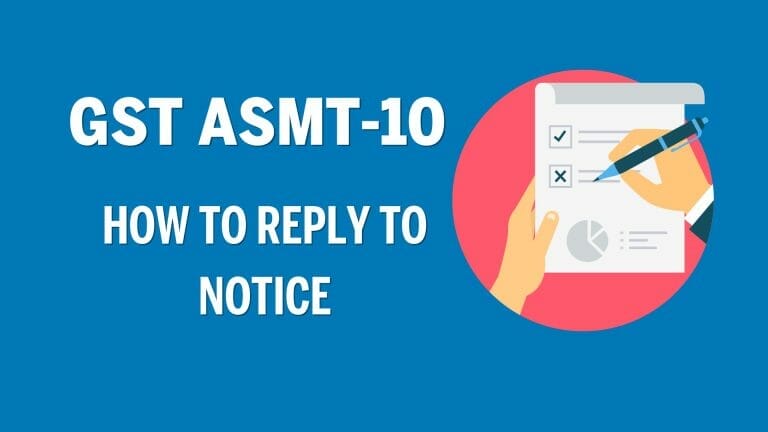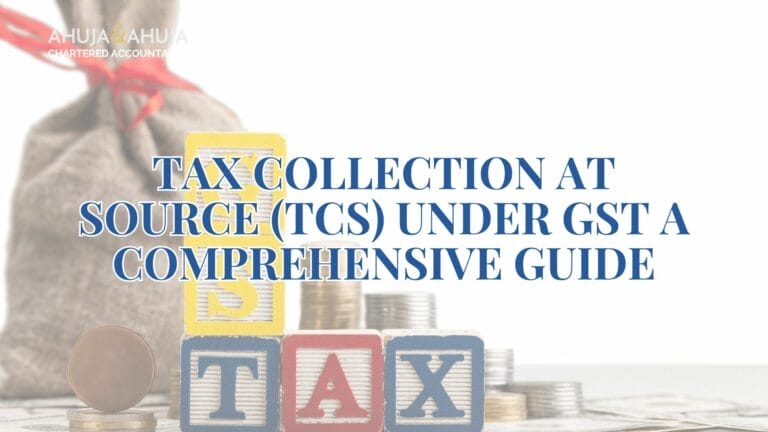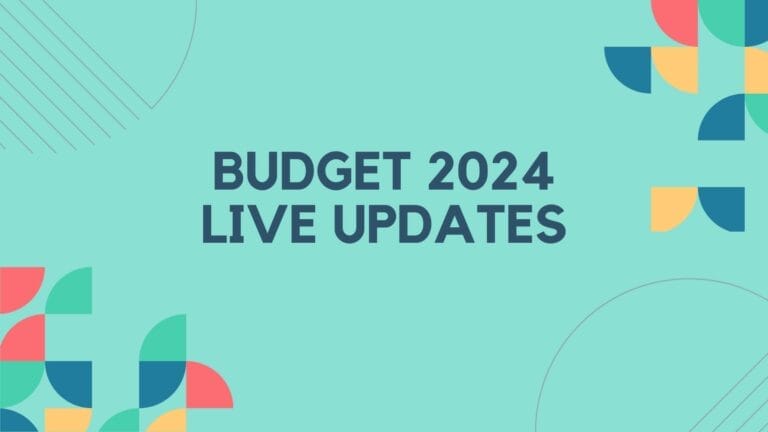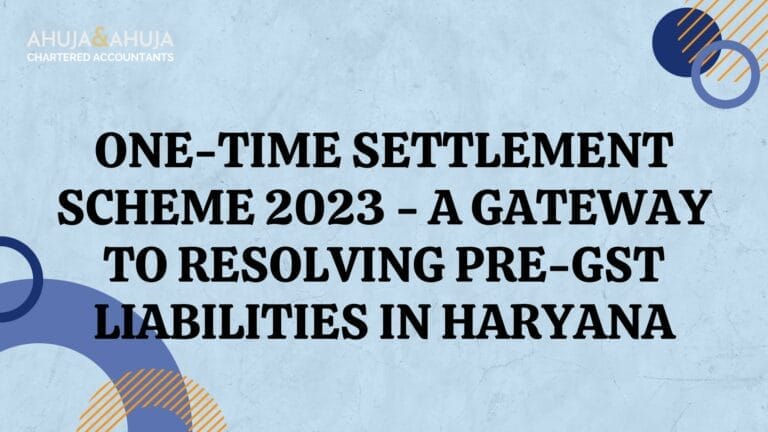Understanding the Impact of New GST Section 74A: A Complete Analysis
GST in India has always been a living, breathing law—constantly evolving, shaped by amendments, clarifications, and the realities of implementation. Since its inception, the GST framework has seen a steady stream of changes: sections added, deleted, redrafted, and sometimes left in limbo, never notified or implemented. This dynamic environment has been both a strength and a source of complexity, especially for taxpayers and professionals navigating compliance.
A New Chapter: The Arrival of Section 74A
The 2024 Union Budget marked a pivotal moment in this journey. With the enactment of Section 138 on 16 August 2024, the GST landscape underwent a fundamental shift: Sections 73 and 74—long the backbone of GST’s approach to tax shortfalls, fraud, and misstatements—were deleted. In their place, Section 74A was introduced, effective from 1 April 2024, for all tax periods from FY 2024–25 onward.
Why such a dramatic overhaul? The answer lies in the persistent challenges that plagued the old regime. Sections 73 and 74, while conceptually clear in their separation of fraud and non-fraud cases, created a fragmented procedural maze. Taxpayers and authorities alike struggled with mismatched processes, portal limitations, and a rising tide of litigation. The result: confusion, compliance headaches, and a system that sometimes punished honest mistakes as harshly as willful evasion.
Purpose and Scope: What This Article Delivers
This analysis is designed to answer the questions that matter most to you—whether you’re a business owner, tax professional, or compliance officer. We’ll unpack the rationale behind Section 74A, dissect its architecture, and contrast it with the old regime. Expect a practical, user-driven approach: clear explanations, actionable insights, and a critical look at both the opportunities and challenges the new law brings.
Why Section 74A? The Context and Rationale
Let’s start with the “why.” What prompted lawmakers to scrap two foundational sections and replace them with a single, unified provision?
Chronic Issues Under Sections 73 & 74
- Fragmented Approach: The old regime drew a sharp line between fraud (Section 74) and non-fraud (Section 73) cases. In theory, this made sense. In practice, it led to procedural confusion, as similar conduct could be treated differently based on subjective interpretations.
- Portal and Administrative Mismatches: The GST portal often lagged behind legislative changes, making it difficult for taxpayers to comply and for authorities to enforce. This disconnect fueled disputes and increased the risk of errors.
- Rising Litigation: The ambiguity and complexity of the old system led to a surge in litigation. Taxpayers found themselves defending against notices based on suspicion rather than solid evidence, while authorities struggled to maintain consistency.
Policy Drivers and Legislative Intent
Section 74A is the government’s answer to these pain points. The objectives are clear:
- Unified Compliance and Penalty Regime: By merging fraud and non-fraud cases into a single framework, Section 74A aims to simplify compliance and reduce procedural ambiguity.
- Reduced Litigation, Incentivized Settlement: The new section introduces clear penalty relief windows and standardized timelines, encouraging early resolution and minimizing protracted disputes.
- Alignment with GST’s Broader Goals: The government’s vision for GST has always been about ease of doing business, transparency, and fairness. Section 74A is a step toward realizing that vision—at least on paper.
Applicability and Transition
- From When? Section 74A applies to all tax periods from FY 2024–25 onward. For earlier years, Sections 73 and 74 will continue to govern pending and legacy cases.
- Transition Handling: This means businesses and advisors must now operate under two parallel regimes—one for past periods, another for current and future compliance. The transition will require careful attention to detail and robust documentation.
The Architecture of Section 74A: Key Features and Innovations
Section 74A is not just a legislative shuffle—it’s a structural overhaul. To appreciate its impact, let’s break down its core components and see how they reshape the compliance landscape.
Unified Handling of Fraud and Non-Fraud Cases
Gone are the days of bifurcated procedures. Section 74A brings both fraud and non-fraud cases under a single, standardized framework. This means:
- No More Segregation: Whether the issue is a genuine error or a willful misstatement, the process for determination, notice, and penalty now follows the same playbook.
- Standardized Evidence Requirements: The law now insists on material evidence for any allegation—no more action based on mere suspicion or assumption. This is a significant shift, especially for taxpayers who previously faced notices on flimsy grounds.
Notice and Order Procedures: Raising the Bar
Section 74A introduces a more disciplined approach to notices and orders:
- Threshold for Initiation: No notice will be issued if the tax liability is ?1,000 or less. This spares taxpayers from harassment over trivial sums and allows authorities to focus on substantive cases.
- Mandated Evidence: Every notice must be backed by concrete evidence. Allegations of fraud or misstatement require documentation, not just conjecture.
- Defined Timelines:
- Notice: Must be issued within 42 months from the relevant date (erroneous refund, excess ITC, or annual return due date).
- Order: Must be passed within 12 months from the date of notice. This brings predictability and curbs the open-ended uncertainty that plagued the old regime.
Penalty Structures and Relief Provisions: A New Matrix
Section 74A’s penalty regime is both nuanced and incentive-driven. Here’s how it plays out:
- Non-Fraud, Voluntary Payment (Before Notice):
- If tax and interest are paid voluntarily, there’s zero penalty.
- Non-Fraud, After Notice:
- Penalty is the higher of 10% of tax due or ?10,000.
- Fraud Scenarios:
- Voluntary Payment Before SCN: 15% of tax as penalty.
- Within 60 Days of SCN: 25% of tax as penalty.
- After 60 Days of SCN: 50% of tax as penalty.
- Timelines and Payment Windows:
- The law incentivizes prompt settlement by offering lower penalties for early payment, especially before or soon after a show cause notice (SCN).
Shortfall and Self-Assessed Tax Mechanisms
Section 74A addresses two critical compliance gaps:
- Shortfall in Payment: If a taxpayer’s payment falls short, the officer must issue a notice for the shortfall. This ensures due process and gives the taxpayer a chance to respond.
- Self-Assessed/Collected Tax Default: For the first time, a specific penalty is prescribed if self-assessed or collected tax is not paid within 30 days of the due date. This closes a loophole and signals a stricter stance on self-declared liabilities.
Procedural Safeguards and Definitions
To prevent overreach and ensure clarity:
- Explanations on Proceedings: The law clarifies that proceedings under Section 74A do not include criminal prosecution under Section 132, keeping civil and criminal liabilities distinct.
- Definition of “Suppression”: Now explicitly includes non-declaration or failure to furnish information when required. This gives both taxpayers and authorities a clearer yardstick for compliance.
- Statements and Deemed Notices: If a statement is issued for periods not covered by the original notice, it must be based on the same grounds. This prevents authorities from fishing for new issues under the guise of ongoing proceedings.
Comparative Analysis: Old Regime vs. New Regime
To truly grasp the magnitude of change, let’s contrast Section 74A with the now-defunct Sections 73 and 74.
| Parameter | Section 74A (New) | Section 73 (Old) | Section 74 (Old) |
|---|---|---|---|
| Applicability | All cases (fraud & non-fraud) | Non-fraud cases | Fraud/misstatement cases |
| Notice Threshold | Rs.1,000 | No explicit threshold | No explicit threshold |
| Evidence Requirement | Mandatory, material evidence | Officer’s assumption | Officer’s suspicion |
| Notice Time Limit | 42 months | 3 years | 5 years |
| Order Time Limit | 12 months from notice | 3 years from annual return | 5 years from annual return |
| Penalty (Non-Fraud) | 10% of tax or ?10,000 (min) | Same as 74A | Not applicable |
| Penalty (Fraud) | Up to 100% of tax (graded relief) | Not applicable | Up to 100% of tax (graded relief) |
| Voluntary Payment Relief | Zero penalty (non-fraud) | Zero penalty (non-fraud) | 15%/25%/50% penalty (fraud) |
| Self-Assessed Tax Penalty | Yes (new addition) | No | No |
Procedural Changes: What’s Streamlined, What’s New
- Notice Issuance: Now more focused, with a monetary threshold and evidence mandate.
- Order Timelines: Shorter, with a 12-month cap post-notice, reducing prolonged uncertainty.
- Penalty Relief Windows: Clearly defined, with incentives for early compliance.
Substantive Differences and Practical Effects
- Merging Fraud and Non-Fraud:
- Implication: All taxpayers, regardless of intent, face the same initial process. This levels the playing field but also means honest errors and deliberate frauds are scrutinized similarly—at least until evidence is weighed.
- Administrative Efficiency vs. Taxpayer Burden:
- Efficiency: Authorities benefit from a unified process and less procedural ambiguity.
- Burden: Taxpayers must be more vigilant, as even minor mistakes can trigger the same machinery as major frauds.
Equity and Fairness Concerns
- One-Size-Fits-All?
- The unified approach risks treating honest mistakes and willful evasion with the same brush—at least at the notice stage. This could feel unfair to compliant taxpayers, especially small businesses.
- Documentation Burden:
- With the onus on taxpayers to prove their bona fides, expect a heavier emphasis on record-keeping and audit trails.
- Mitigation Prospects:
- The requirement for material evidence and the gradation of penalties do offer some protection, but the real test will be in implementation.
What Does This Mean for You?
Section 74A is a double-edged sword. It promises clarity, speed, and fairness—but only if both taxpayers and authorities adapt to its demands. For businesses and advisors, the message is clear: upgrade your compliance processes, document everything, and be proactive in addressing discrepancies.
In the next part, we’ll translate these changes into practical action points, best practices, and strategic advice for navigating the new regime. We’ll also tackle the grey areas and challenges that remain unresolved.
Ready to future-proof your GST compliance? Consider consulting expert GST audit and GST litigation services to navigate these complexities effectively.
Practical Implications for Taxpayers, Businesses, and Advisors
Section 74A is more than a legislative update—it’s a call to action for every GST-registered entity and their advisors. The new regime demands a shift in mindset, process, and risk management. Here’s how to adapt and thrive:
Immediate Action Points Post-74A Implementation
- Review and Revamp Compliance Processes:
Every business should revisit its GST compliance protocols. The days of “good enough” record-keeping are over. Now, even minor lapses can trigger the same machinery as major frauds.
For assistance, businesses in Delhi can reach out to our chartered accountants in Delhi who specialize in GST compliance and advisory. - Leverage Voluntary Payment Windows:
The law rewards prompt, voluntary correction. If you spot a shortfall or error, act before a notice arrives—penalties can be nil or significantly reduced. - Prepare for Evidence-Driven Notices:
Notices must now be backed by material evidence. But the burden of proof often shifts to the taxpayer. Keep documentation ready to demonstrate intent, accuracy, and compliance.
Best Practices and Risk Mitigation
- Evidence Retention and Audit Trails:
Maintain robust, easily retrievable records for all GST transactions. This includes invoices, reconciliations, correspondence, and explanations for any anomalies. - Internal Training and Communication:
Ensure your finance and compliance teams understand the new timelines, penalty structures, and documentation standards. Regular training and clear internal communication are essential. - Embrace Technology:
Use GST software and workflow automation to track deadlines, flag discrepancies, and generate audit trails. Technology is now a compliance ally, not a luxury.
Advisory Tips for “Taxable Person in Default” Presumptions
- Proactive Self-Verification:
Don’t wait for a notice. Regularly self-audit GST returns and payments. Address discrepancies before they escalate. - Intent-Neutral Discipline:
Section 74A doesn’t care about intent at the notice stage. Procedural discipline—timely filings, reconciliations, and responses—matters more than ever.
Handling Ongoing/Pending Cases
- Legacy Handling:
For periods up to FY 2023–24, Sections 73 and 74 still apply. Segregate your compliance files and strategies accordingly. - Distinguishing Principles:
Document the basis for which regime applies to each case. This will be crucial if disputes arise over transitional issues.
If you are located in Chandigarh and need specialized GST audit support, our chartered accountants in Chandigarh offer comprehensive advisory and audit services tailored to the new GST framework.
Implementation Challenges, Ambiguities, and Future Outlook
No major reform is without teething troubles. Section 74A, for all its promise, brings new uncertainties:
Ambiguous or Grey Areas
- Evidentiary Standards:
What qualifies as “material evidence”? The law is clearer than before, but disputes over sufficiency and relevance are inevitable. - Overreach Risks:
The unified approach means minor errors and willful frauds start on the same footing. There’s a risk of honest taxpayers feeling unfairly targeted, especially if authorities adopt a “notice first, ask later” mindset.
Litigation and Dispute Forecast
- Will Simplification Reduce Appeals?
The hope is that clarity and early settlement windows will reduce litigation. But new ambiguities—especially around evidence and penalty gradation—could spark fresh disputes. - Impact on Tribunals and Judiciary:
A more streamlined process may ease the burden, but only if authorities exercise discretion and taxpayers are well-prepared.
For detailed updates on litigation trends, review our blog post on GST litigation services.
Anticipated Amendments and Stakeholder Feedback
- Areas for Clarification:
Industry bodies and consultants are already flagging the need for detailed rules on evidence, timelines, and documentation standards. - Prospects for Further Refinement:
Expect clarificatory notifications and perhaps tweaks to address practical pain points as the regime beds in.
Strategic Considerations for Tax Advisors and Compliance Professionals
The transition to Section 74A is a prime opportunity for advisors to add value:
- Client Education and Communication:
Proactively brief clients on the new regime, highlighting key changes, risks, and action points. Use checklists, webinars, and bulletins to keep them informed. - Workflow and Alert Systems:
Update internal systems to track new deadlines and penalty windows. Automated alerts can prevent costly oversights. - Regulatory Watch and Advocacy:
Stay plugged into industry forums and regulatory updates. Share feedback with authorities to help shape clarifications and future amendments.
User Experience, Equity, and Access to Justice
Is Section 74A fair to honest taxpayers? The answer is nuanced.
Pros
- Less discretion for officers, more clarity for taxpayers.
- Defined timelines and evidence requirements reduce arbitrary action.
Cons
- The compliance net is wider—minor errors can trigger the same process as major frauds.
- Documentation and procedural burdens are higher, especially for small businesses.
Appeal and Recourse Mechanisms
- Taxpayers retain the right to challenge notices and orders through administrative appeals and, if necessary, the judiciary.
- A stepwise approach: respond to the notice with evidence, appeal to the Commissioner (Appeals), and escalate to the GST Appellate Tribunal or courts if needed.
Impact on Small Businesses and Resource-Challenged Taxpayers
- Tailored Strategies:
- Use simplified compliance guides and helplines.
- Consider outsourcing GST compliance if internal capacity is limited. Our outsourcing services can help small businesses manage compliance efficiently.
- Leverage Government Aids:
- Watch for government-issued FAQs, webinars, and sector-specific guidance.
Summing Up: Key Takeaways and Next Steps
Top Three Actionable Takeaways:
- Upgrade Documentation: Treat every GST transaction as if it could be scrutinized—because it might be.
- Act Early: Voluntary correction before a notice is the best way to minimize penalties.
- Stay Informed: The law is new, and clarifications will follow. Keep learning and adapting.
Internal Communication:
Share concise, actionable updates with all relevant teams.
Use visual aids—flowcharts, checklists—to demystify the new process.
Further Guidance:
Refer to official GST portal updates, CBIC circulars, and professional body commentaries.
Engage with peer networks and attend industry webinars for practical insights.
For ongoing updates on GST practical issues, you can explore our detailed GST practical guide on Input Tax Credit blog post.
Section 74A is a milestone in GST’s evolution—an attempt to balance robust enforcement with procedural clarity. For taxpayers and advisors, the path forward is clear: embrace best-in-class compliance, invest in documentation, and respond proactively to the new regime. Complexity may persist, but with the right strategy, it’s manageable—and even an opportunity for those who prepare well.
Disclaimer
The materials provided herein are solely for educational and informational purposes. No attorney/professional-client relationship is created when you access or use the site or the materials. The information presented on this site does not constitute legal or professional advice and should not be relied upon for such purposes or used as a substitute for professional or legal advice.







